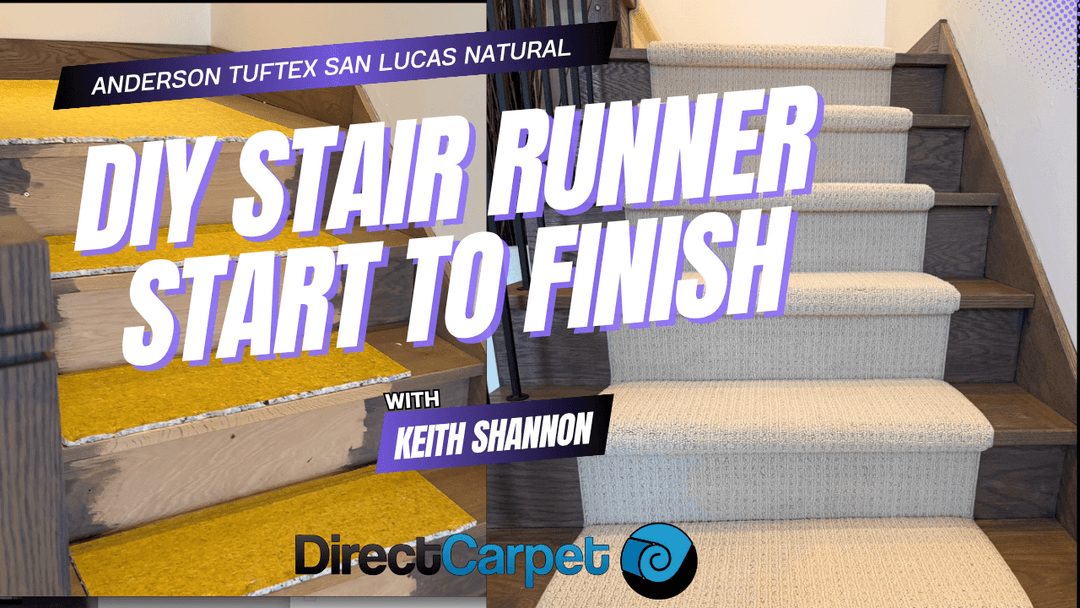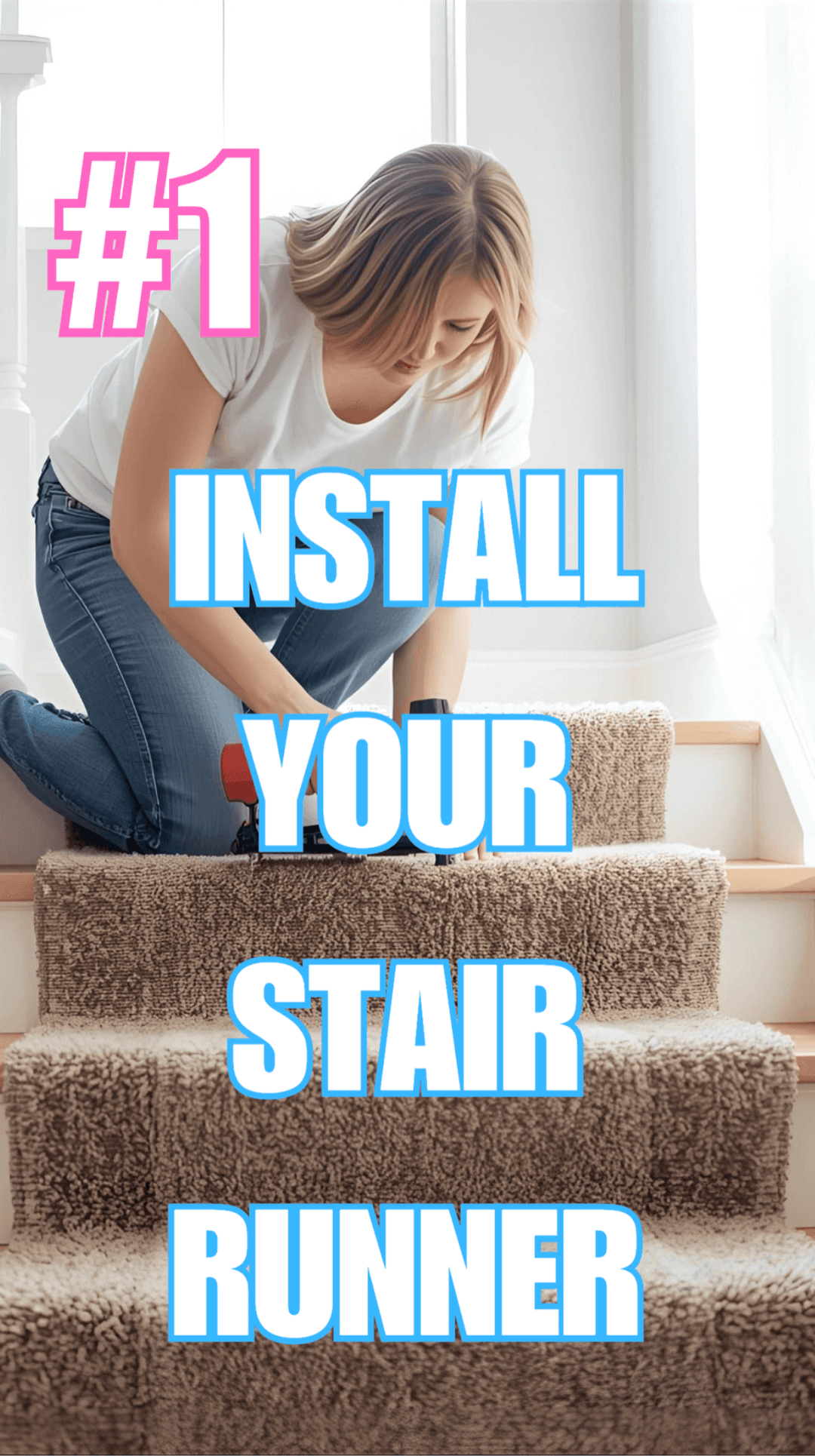Carpet installation on concrete floors How-To
Carpet installation on concrete floors How-To
Attaching Carpet to Concrete
-
Clean the Concrete Floor
-
Installing the Tack Strips
-
Laying down the Padding
-
Rolling out the Carpet
-
Seaming up the Carpet
-
Stretch the Carpet
-
Cut and Tuck the Perimeter of the room
-
Clean up
How to Put Carpet on Concrete
1/Cleaning your Concrete floor Before Carpet Installation
Make sure your Basement floor is clean before you start, Use a Scraper to remove all drywall compound glue and anything else stuck to the concrete floor, use a shop Vac or a broom and clean the entire area you'll be happy that you did :)
Tip: sharpen your Scraper with a grinder if possible before you start :)
2/Installing Tack Strip on your Concrete floor
You will Need to Purchase a Box of Concrete Tack strip, these are the wood strips with nails that are to be installed around the perimeter of the room,
there are tack strips for wood floors (Carpet) and tack strips for concrete floors (Carpet), make sure you get the box marked concrete (carpet) now its time to Lay out the strips around the perimeter of the room
(Obviously, if you have a Smooth wood subfloor you will lay a wood Tack strip)
Carpet tack strip dimensions
You can get a box of concrete Tack Strip and some of the materials you"ll need at Home Depot, Lowes or a carpet installation supply shop in your area. Don't Forget to buy an extra bag of 5/16 concrete nails, you will need it.

Should you tip your Carpet Installers? Answer if they do a great job of course you should!
Carpet DIY Install
Smooth Edge needs to be installed with a hammer on the Concrete Half inch away from the baseboards or wall, the nails that are in tack strips have a direction (the little nails are angled) your tack strips need to have the nails facing the wall away from the room,
They act like a fish hook, and when you push the carpet over top of the tack strip towards the wall because they are angled, the carpet grips and stays tight.
Tip: when Hammering your smooth edge into concrete you must hit the concrete nail perfectly straight to plunge it into the concrete surface, failure to do so will result in cracked concrete surface and you will have to use that extra bag of concrete nails we talked about!
PS: Don't worry if this happens because it will happen every few nails, that's just part of a concrete tack strip installation :)
3/ Installing Metal Door Transitions
If you have Doorways in your basement, you will need to use metal transitions to secure your carpet,such as the one seen in the picture, you will need little concrete nails 3/16 or a concrete drill to set them into place, (the video at the end of this blog will show you the exact process)
Tip: It's important to make sure that your doorway metal is positioned underneath the door where it closes, so that when the door is closed on the carpet side you only see carpet and when you're on the other side lets say the bathroom you only see the tile :)

You will need tin snips to cut these metal doorway transitions.
Tip: Metal Doorway Transitions Can be Purchased at Big Box Stores and local supply shops!
Lay Out The Under Padding
Now your Getting to the fun Part UnderLay, Now Hopefully you have purchased a really good durable underlayment with moisture barrier, this is not the time to cheap out!
You Need Under Pad that has a moisture barrier on top such as (10 mm gold Underpad)
Best Underlayment with moisture barrier is essential to a good carpet Install, a good pad not only feels good under foot, but helps keep a concrete pad warm and helps make your carpet last longer!
Under Pad with moisture barrier Usually comes in a 45 ft long by 6ft wide bail equalling 30 yards
Tip: figure out the square feet of your basement and divide that number by 9, this will give you the square yards you need for carpet and pad to cover your flooring area!
Tip: Order 10% more than you think you need :)
Install the Padding
Lay your 6ft wide underlayment with moisture barrier (padding) across the surface of the floor and cut the strips to fit the length of your basement with a really good sharp knife
Tape Down the Padding
line the padding up together until you have completely covered the surface of the floor, Use a really good tape like tuck tape or duct tape, tape the seams together to make one continuous massive pad Piece covering the entire surface of the basement floor
Tip: I prefer Tuck Tape over Duct Tape :)
Using a good Sharp Knife, cut the padding back against the edges of the concrete tack strips cut back around the entire perimeter of the room until you have revealed the metals and all the tack strips.

Tip: make sure your underlayment is cut back 1/4 inch away from your smooth edge!
Reason being is that when the weight of the carpet along with installing carpet will cause the Underlay to push overtop of the tack strips.
This will render the tack strips useless and your installation will fail :(
Installing carpet on concrete without padding can be done, but is not recommended
Rolling out the Carpet
You Obviously Have Measured Properly and Purchased Enough material for your carpet Job and to cover the entire room, you have the right yardage plus 10% extra to do your carpet project properly
You have your proper tools to install carpet such as a knee kicker, Sharp Knife, Hammer, Carpet Tucker, Seaming iron, seaming tape to tape the seams, Rubber Mallet etc.
Ok, Let's Begin with Rolling out the carpet
If you have lets say a 20x20 sized room and you have purchased 2 pieces of carpet at 20.5 ft each, Lay the First piece of carpet up against the straightest wall or against the baseboard.
Flip Over the Edge of the carpet that is in the middle of the room about 2 ft back and cut a straight line with a straight edge. This will be your straight cut for your seam.
Roll Out the Second piece of carpet in the middle of the room, Make sure the pile of the carpet is running in the same direction.
Fold over the carpet and straight edge the second seam.
Flip over the second cut piece, Now pull into place so that the seam is lined up.

Tip: if the straight edged seam looks crooked you will have to recut and do a better job, take your time!
If the Seam looks ready to seam and all the carpet is in the proper places, you can now proceed to trim down the carpet around the edges of the room to 1 inch high!
This will make it easier to kick the carpet and stretch the carpet (this means the carpet will be cut down enough to hook on the tack strips around the perimeter and edges of the room!
Once you have completed this process, you ready to light up the seaming iron.
Seaming the Carpet
First things first, measure and roll out the seaming tape, for this seam you will need about 20.5 ft of seaming tapes.
Fit the seaming tape under the two pieces of carpet centering the seaming tape so that equal amounts of tape are on each side of your carpet seam.
Make sure your Seaming Iron is Hot and ready to melt the glue.
Tip: Set the Iron dial to 2.5 this will give you more time to manipulate the seam!
Stretching the Carpet/ Install Carpet
Now it's time to install carpet, Most of you first timers will be using a Knee Kicker so we will stick with that install method.
Look at the Room and split it into 4 Pieces, this will make installing carpet a little simpler to understand, See video
Start in the middle directly across from the seam with your Knee Kicker secure 1 to 2 ft of carpet over the smooth edge now go directly across the room on the opposite side and secure the carpet the same way!
Tip: You Can Rent a Knee Kicker Home Depot
Now that the carpet on both sides are secured, go to the end of the room in the middle and secure the carpet at that end and do the exact same thing on the opposite side of the room.

Now that the Carpet in the entire room is secured in the shape of a cross and you have sectioned of the room into 4 separate pieces.
Now just use your Knee Kicker to install the 4 pieces of the pie working from the first secured section to each corner this way bringing all the bubbles to the corners of the room.
Cutting and Tucking the Perimeter of the Room
Now that you have stretched the edges of the carpet around the perimeter of your room and over your concrete carpet surface :) you're ready to cut and tuck the edge of the carpet either under the baseboard or to the drywall.
Using your Carpet Tucker and sharp knife, rake the carpet over the pins of the concrete smooth edge and cut the carpet back, leaving 1/4 inch to tuck into the wall or under the baseboard.
Cut and tuck your metal transition doorways and tap the edge down with a mallet.
Conclusion
I'm Keith Shannon professional Carpet Installer and Owner at Directcarpet.com
Carpet installation diy takes practice with the right tools and perseverance, you too will surprise yourself how good you can be!
Up-coming Tutorials Carpet for concrete stairs
carpeting concrete floor
concrete floor rugs
F.A.Q
What are Tackless Carpet Strips?
easy carpet installation
how much to tip carpet installers
install threshold on concrete
5 Stair Runners you can Install Yourself













This article provides a comprehensive overview of carpet installation, covering everything from preparation to post-installation care. The step-by-step guide is incredibly helpful for those considering installing carpets themselves or hiring a professional. Overall, an informative and valuable resource for anyone embarking on a carpet installation project. To get more information you ca visit our website: https://www.mcfarlandflooring.com/
Leave a comment